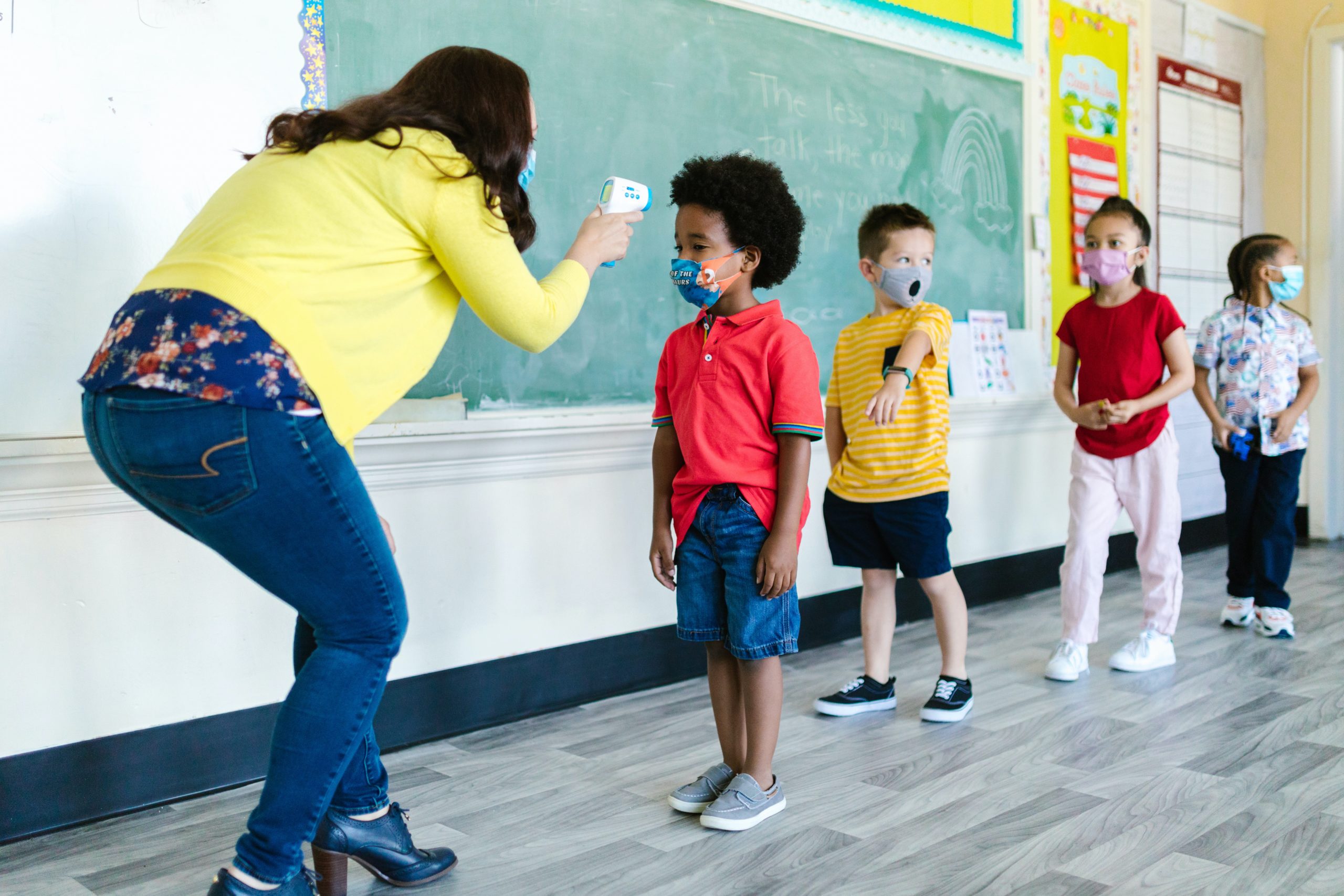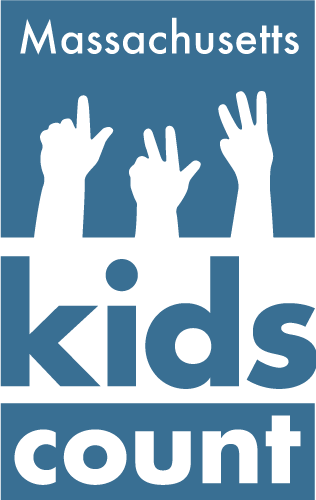K-12 Schools During the COVID Crisis
Each day, Massachusetts schools continue to persevere through the challenges of the COVID pandemic to teach our young people. The need for unprecedented safety measures, the rapid shift to remote learning, the importance of looking at students’ holistic needs, and the logistics of returning to in person learning, all create significant hurdles for schools to overcome in their vital role of educating young people across our state.
Just as not all students need the same support, communities across Massachusetts faced the pandemic from different starting points. Many school districts that have historically been under-resourced and that serve many kids of color, also faced higher rates of COVID cases, compounding multiple challenges. Many of these same districts also struggle with aging, out-of-date facilities that are particularly problematic while confronting a respiratory illness.
Funding is a key factor in how schools manage the COVID emergency. In 2020, the overall picture for K-12 funding at the state level was bleak. Because of revenue declines early in the pandemic, state budget funding for K-12 education under the Student Opportunity Act (SOA) dropped by $232 million compared to what was proposed before the pandemic.1 This particularly harmed low-income districts that serve many students of color. Ten of the largest recipients of funding from the SOA, including Brockton, Lawrence, and Springfield, had $117 million in funding delayed by not starting the SOA reforms in FY 2021.2 This funding dip was only fully counterbalanced when the federal government provided a round of relief funding that arrived in early 2021. Therefore, some of our districts navigated an initial budget hole during the start of the pandemic in addition to numerous other challenges.
As the pandemic unfolds, all schools face more costly operating conditions. According to analysis from the national superintendent and business officer associations, operating safely during COVID costs on average $486 per student annually, or $461 million across Massachusetts using pre-pandemic student data.
Federal Funding for K-12 Schools in the American Rescue Plan ($2.24 billion in K-12 support)
Fortunately, the federal government stepped up to respond to the challenges of the COVID pandemic for schools. Overall, since March 2020, the federal government enacted six significant relief laws. These laws addressed a wide range of issues including health care, unemployment insurance, loans for businesses, stimulus checks for individuals, and financial support to the state budget and cities.

K-12 schools were prioritized in three of the relief bills and a fourth had limited support. This report focuses on the most recent and largest round of aid from the American Rescue Plan Act (ARPA). For detailed information on earlier rounds of aid, see the appendices below.
Overall, ARPA has provided a total of $2.24 billion for K-12 education across several areas. The largest grant program for K-12 schools created through federal relief laws, including ARPA, is the Elementary and Secondary School Emergency Relief (ESSER) grant fund.3 ESSER grants received a total of $1.84 billion within ARPA. ESSER allocations are based on low-income enrollment under the federal Title I program that supports enrichment for low-income kids. This creates progressive distribution of ESSER grants with greater dollars flowing to those serving more kids in poverty.4 There is also a minimum grant of around $177,000 for all districts, particularly those not eligible for Title I who would otherwise not gain support.5 This is similar to the prior rounds of ESSER where the Commonwealth guaranteed a minimum amount.6 Individual allocations for districts can be found here.
ESSER can be used for a wide range of purposes beyond the direct challenges created by the pandemic and covers the secondary impacts of how COVID disrupted learning and school operations. This includes supporting remote learning, COVID safety measures, mental health services, targeted support for low-income, special education, and English Language Learner populations, and summer and afterschool programs.7
As far as other formula driven grants, ARPA also provided over $1 million in grants to Native American tribal schools in Massachusetts to adapt and mitigate the effects of COVID through the American Indian Resilience in Education (AIRE) grant.8
ARPA also has $63 million in support specifically for special education students through Individuals with Disablities Education Act (IDEA) grant funds.9 This funding will flow to school districts to serve students in public schools, including preschoolers.
ARPA also contains $25 million to continue Emergency Assistance to Nonpublic Schools (EANS) an assistance program that originated in a prior relief bill to counter COVID related harms to private schools in Massachusetts.10
In addition to formula driven grants like ESSER and IDEA, ARPA had over $300 million for COVID mitigation, school meals, nutrition, and health initiatives. Among COVID mitigation efforts, school-based testing to identify spread of the virus received $208 million in ARPA funds. Additionally, the Emergency Connectivity Program to increase connected device and internet access for students engaging in remote learning received $87 million.11
Another small ARPA grant of nearly $10 million went to the Emergency Food Assistance Program (TEFAP) that has focused throughout the pandemic on distributing food for low-income communities through food banks and community-based organizations.12 Massachusetts has implemented this broad program through the Department of Elementary and Secondary Education (DESE), so it is included with education spending for this analysis.
According to the Baker administration, the specific uses of over $2.05 billion in ARPA education grants (nearly 96% of the total) remain to be determined (though delays in reporting and schools being required to spend earlier grant dollars first may contribute to this). Less than 1% of this funding has been spent as of October 2021. The federal government required the obligation of funds (the state and districts determining precisely what funds will be spent on) by the fall of 2023.13 Schools can likely plan for and spend funds significantly ahead of these deadlines.
The substantial ARPA funds left to plan for and spend creates opportunites for education advocates, policymakers, teachers, families, and students to make their concerns and priorities heard. These stakeholders have a unique opportunity to work with school leaders to help determine the best uses of ARPA education relief dollars to support equitable funding in ways that will support all kids — particularly low-income and kids of color who have been harmed by past underinvestment. Additionally, in November 2021, there is another time-sensitive opportunity for stakeholders to provide input on a separate ARPA spending bill from the Legislature that will allocate general state relief dollars from ARPA (as opposed to targeted K-12 dollars discussed here). Some of these funds will also likely support education.
Our state, cities, towns, and school districts could parlay these one-time opportunities to cultivate innovative educational services that hold promise to be continued over the long term using state and federal resources in the years to come. This includes funds coming from the SOA at the state level over the next five years, as well as future federal spending.
An inclusive, participatory process to determine the use of ARPA funds would increase the chances that districts use relief funds strategically and effectively for kids, teachers, schools, and families across the Commonwealth. This is an opportunity to create more equitable school funding, services, and support that lead to recovery from COVID as well as long-term success for all students.
APPENDIX 1: Earlier Rounds of Federal Relief Before ARPA
Round 1 – Families First Coronavirus Response Act ($7 million in K-12 support)
School Meals, Health, and Nutrition Funding
The Families First Coronavirus Response Act (FFCR) contained $7 million for the Emergency Food Assistance Program (TEFAP) which was administered by the Department of Elementary and Secondary Education in Massachusetts (see brief discussion above).
Round 2 – CARES Act ($546-$597 million in K-12 support)
Coronavirus Relief Fund (CvRF)
The third of the six federal relief laws, the CARES Act, which passed in March 2020, was the first to put a large focus on K-12 education relief. The CARES Act created a handful of significant grant funds for K-12 schools in Massachusetts. In addition, part of the Coronavirus Relief Fund (CvRF) — which had broad uses across state and local government, including support for cities, towns, and boards of health — was redirected to support school districts. CvRF funding that went to Massachusetts school districts was $215 million. The uses of CvRF was focused on addressing the immediate unanticipated impacts of COVID that put pressure on state and local budgets.
For schools, these costs included adjustments in areas like staffing, training, student services, technology, internet, supplies, and facilities to meet needs during remote learning and the subsequent shift back to in-person learning. CvRF funding for schools was distributed by the summer of 2020 through a flat per-student allocation of $225 for school reopening grants and a formula for remote learning support.14 Remote learning funds were targeted to give more support to lower-wealth communities. The allocations to individual school districts can be found here.
ESSER I
The first round of ESSER for Massachusetts (ESSER I) totaled $215 million. Roughly 90% of this amount, $194 million, went directly to school districts, with the remainder being held by DESE for administration and other statewide efforts.15 Similar to other funds in the CARES Act, it was delivered to school districts in the late spring or early summer of 2020. Individual allocations that districts received under ESSER I can be found here.
Governor’s Emergency Education Relief (GEER) Fund
A third and smaller grant program for K-12 schools created by the CARES Act is the Governor’s Emergency Education Relief (GEER) fund. The first round totaled $51 million for Massachusetts. GEER funding is distributed based on a blend of Massachusetts’ share of all students nationally (including higher education) and low-income students.16
Grants into the GEER fund can be used flexibly at the discretion of Governor Baker to support education services harmed by the pandemic. These funds can support all levels of education, with early childhood education providers, local schools, education non-profits, and institutes of higher education all eligible to receive grants.17 For this analysis, we include GEER as a potential source of K-12 funding ranging between $0-$51 million. When the Commonwealth makes full data on GEER spending available, it should be clearly disaggregated into early childhood, K-12, and higher education components.
School Meals, Health, and Nutrition Funding
The CARES Act contained $108 million for Child Nutrition and National School Lunch Programs to directly support school meals across Massahcusetts. On top of these additional resources, CARES and other relief bills contained significant flexibilities for schools to administer meals in new and unique ways due to the challenges of the pandemic, while many requirements were relaxed.18 Through the pandemic-EBT program, starting in the Spring of 2020, families that lost access to meals in schools during remote learning could convert these critical nutrition benefits to an EBT card to purchase food.19 P-EBT could be utilized in combination with other food outreach programs, including community-based grab-and-go meal programs.
CARES contained two smaller health, nutrition, and meals programs. One was a second round of $7 million in funding for TEFAP while the second was $667,000 for Improving Student Health and Academic Achievement program administered by the Center for Disease Control Healthy Schools program.20 This program focused on school-based efforts to prevent and manage chronic conditions that harm student academic achievement in school.
According to recent data from the Baker administration, virtually all CARES Act education grants have been obligated (with recipients of the grants having specified how the funds will be used) with only about a fifth of the funding remains to be spent.
Round 3 – CRRSA ($883-$905 million in K-12 support)
The fifth major relief law, the Coronavirus Response and Relief Supplmental Appropriations Act of 2021 (CRRSA) passed in late December of 2020.21 CRRSA contained the second round of significant federal relief for K-12 schools and reinvested in two of the grants created in the CARES Act. The largest was ESSER II, with the funding going through the existing grant structure.
The main difference in ESSER II was the increase to total funding available. ESSER II provided roughly $815 million across Massachusetts, nearly four times the amount of ESSER I. The allowable uses of ESSER II were the same as the prior round. However, the federal government put additional emphasis on addressing the secondary impacts of the pandemic and the return to in person learning – such as addressing learning gaps, reopening plans, and facility upgrades to increase ventilation.22 Nevertheless, these uses were also allowable with ESSER I.
As with the first round, about 90% of ESSER II funds ($739 million) went direcly to school districts, with the remainder used for state functions and administration.23 The distribution formula was also the same. The allocations that districts received under ESSER II can be found here.
According to the Baker administration, about 12% of ESSER II funding remains unobligated. Guidance from the federal government suggests that these funds must be obligated by the fall of 2023 (nearly three years after passage) reflecting an outer boundary of when this funding will be put into action.24
CRRSA also added more flexible GEER funds that Governor Baker could allocate across education (GEER II) which totaled $47 million for Massachusetts.25 While most of the rules for GEER II were consistent with the first round, $24 million of GEER II was reserved to support private schools in Massachusetts harmed by the pandemic, leaving only $23 million for public schools. Also similarly with the first round, GEER II funding likely was spread across several small initiatives spanning all levels of education. For this analysis that will be considered a K-12 funding amount between $0-$23 million.
CRRSA also provided funding for a handful of school meals, health, and nutrition programs. It provided an emergency funding boost to Massachusetts school meal programs, as they continued to adapt to the disruptions of COVID and significantly adjusted the ways critical nutrition program reached kids and families (see discussion above). This support included over $26 million for School Lunch Emergency Operating Costs and $9 million for Child and Adult Care Food Program Emergency Costs.26 Lastly, CRRSA contained $8 million for the TEFAP food/nutrition program.
According to recent data from the Baker administration, overall nearly 88 percent of CRRSA education grants have been obligated, but nearly 84 percent remains to be spent (delays in reporting and the need to spend earlier grants first may contribute to this).
APPENDIX 2:
| Federal COVID-19 Relief Supporting K-12 Education, By Grant Fund | |||
|---|---|---|---|
| Grant | Relief Laws Providing Funding | Grant Amount | |
| Sub-Total | Total | ||
| American Indian Resilience in Education | American Rescue Plan Act (ARPA) | $1m | |
| CDC School Testing Program | ARPA | $208m | |
| Child and Adult Care Food Program Emergency Operating Costs | Coronavirus Response and Relief Supplemental Appropriations Act of 2021 (CRRSA) | $9m | |
| Child Nutrition and School Lunch Programs | Coronavirus Aid, Relief, and Economic Security Act (CARES) | $108m | |
| Coronavirus Relief Fund Allocation for Schools (CvRF) | CARES | $215m | |
| Elementary and Secondary School Emergency Relief (ESSER) | $2.87b | ||
| (ESSER I) | CARES | $215m | |
| (ESSER II) | CRRSA | $815m | |
| (ESSER III) | ARPA | $1.84b | |
| Emergency Connectivity Fund | ARPA | $87m | |
| Emergency Food Assistance Program (TEFAP) | $32m | ||
| (TEFAP I) | Family First Coronavirus Response Act (FFCR) | $7m | |
| (TEFAP II) | CARES | $7m | |
| (TEFAP III) | CRRSA | $8m | |
| (TEFAP IV) | ARPA | $10m | |
| Governor’s Emergency Education Relief Fund (GEER)/Emergency Assistance to Non-Public Schools (EANS) | $49-$123m | ||
| (GEER I) | CARES | $0-$51m | |
| (GEER II) | CRRSA | $0-$23m | |
| (EANS) | CRRSA | $24m | |
| (GEER III/EANS) | ARPA | $25m | |
| Individuals with Disabilities Education Act | ARPA | $63m | |
| School Lunch Program Emergency Operating Costs | CRRSA | $26m | |
| Student Health and Achievement Program | CARES | $667,000 | |
| GRAND TOTAL | $3.67b-$3.75b | ||
Endnotes
1 MassBudget Budget Data – Chapter 70 Aid, Circuit Breaker Grants, Charter Reimbursements, 21st Century Fund, FY 2021 Current Compared to FY 2021 Pre-COVID proposal.
2 Massachusetts Department of Elementary and Secondary Education. “FY21 Preliminary Chapter 70 Aid and Net School Spending Requirements” and “FY2021 Administrative Update on Chapter 70 Aid and Net School Spending Requirements.” January/July 2020. https://www.doe.mass.edu/finance/chapter70/fy2021/prelim.html & https://www.doe.mass.edu/finance/chapter70/fy2021/chapter70-admin-update.html.
3 United States Department of Education. “Elementary and Secondary School Emergency Relief Fund.” September 2021. https://oese.ed.gov/offices/education-stabilization-fund/elementary-secondary-school-emergency-relief-fund/.
4 Massachusetts Department of Elementary and Secondary Education. “Elementary and Secondary Schools Emergency Relief (ESSER) Fund: Quick Reference Guide.” September 2020. https://www.doe.mass.edu/federalgrants/esser/. United States Department of Education. “Elementary and Secondary School Emergency Relief Fund.” September 2021. https://oese.ed.gov/offices/education-stabilization-fund/elementary-secondary-school-emergency-relief-fund/.
5 Massachusetts Department of Elementary and Secondary Education. “Federal Coronavirus Relief Programs” and “State and Federal Entitlement and Allocation Grants by Fund Code – 119 – ESSER III 2022.” September 2021. https://www.doe.mass.edu/federalgrants/esser/default.html & https://www.doe.mass.edu/grants/entitlement-allocation.aspx?view=code&fy=2022&code=119.
6 Unless otherwise noted, data on federal relief funds for education in Massachusetts are based on October 2021 figures from the Executive Office of Administration and Finance see: Massachusetts Executive Office of Administration and Finance. “COVID-19 Federal Funding Sourced Administered by the Commonwealth – Summary” October 2021. https://www.mass.gov/info-details/about-covid-19-federal-funds, Massachusetts Executive Office of Administration and Finance. “Funding Amount by Local Education Agency.” And “COVID-19 Funding Sources for Local Education Agencies.” 2021. https://www.mass.gov/doc/export-lea-funding-claimed-data/download. Massachusetts Executive Office of Administration and Finance. “Federal Funding Summary” https://www.mass.gov/info-details/about-covid-19-federal-funds. Massachusetts Executive Office of Administration and Finance. “COVID-19 Funding Sources for Local Education Agencies – LEA Funding Data.” https://www.mass.gov/info-details/about-covid-19-federal-funds#covid-19-funding-sources-for-local-education-agencies- & https://www.mass.gov/doc/export-lea-funding-data/download.
7 Elementary and Secondary Schools Emergency Relief (ESSER) Fund: Quick Reference Guide. DESE. September 2020. https://www.doe.mass.edu/federalgrants/esser/.
8 United States Department of Education. “Applications for New Awards; American Rescue Plan-American Indian Resilience in Education (ARP-AIRE).” Federal Register. July 2021. https://www.federalregister.gov/documents/2021/07/13/2021-14858/applications-for-new-awards-american-rescue-plan-american-indian-resilience-in-education-arp-aire.
9 United States Department of Education. “Fact Sheet Section 2014 of the American Rescue Plan Act of 2021 and the Individuals with Disabilities Education Act.” July 2021. pgs. 1-2. https://www2.ed.gov/policy/speced/leg/arp/index.html. https://www2.ed.gov/policy/speced/leg/arp/arp-idea-fact-sheet.pdf.
10 United States Department of Education. “Emergency Assistance to Non-Public Schools.” September 2021 https://oese.ed.gov/offices/education-stabilization-fund/emergency-assistance-non-public-schools/.
11 Federal Communications Commission. “FCC Seeks Comment on Emergency Connectivity Fund for Educational Devices and Connections to Address the Homework Gap During the Pandemic.” April 2021. https://www.fcc.gov/fcc-seeks-comment-emergency-connectivity-fund-educational-devices-and-connections-address-homework.
12 United States Department of Agriculture. “Fact Sheet: Biden-Harris Administration’s Actions to Reduce Food Insecurity Amid the COVID-19 Crisis.” March 2021. https://www.fns.usda.gov/news-item/usda-003721.
13 United States Department of Education. “Fact Sheet American Rescue Plan Act of 2021 Elementary and Secondary School Emergency Relief Fund (ARP ESSER).” pgs. 3-4. https://oese.ed.gov/files/2021/03/FINAL_ARP-ESSER-FACT-SHEET.pdf.
14 Massachusetts Department of Elementary and Secondary Education. “FY 2021 CvRF School Reopening Grant Program.”July 2020. https://www.doe.mass.edu/grants/2021/102/. Massachusetts Department of Elementary and Secondary Education. “Remote Learning Technology Essentials.” July 2020. https://www.doe.mass.edu/grants/2021/117-118/.
15 United States Department of Education. “Elementary and Secondary School Emergency Relief Fund.”
https://oese.ed.gov/files/2020/04/ESSER-Fund-State-Allocations-Table.pdf
https://oese.ed.gov/offices/education-stabilization-fund/elementary-secondary-school-emergency-relief-fund/.
16 United States Department of Education. “Governor’s Emergency Education Relief Fund.” August 2021. https://oese.ed.gov/offices/education-stabilization-fund/governors-emergency-education-relief-fund/. United States Congress. “Elementary and Secondary Education Act of 1965 – Section 1124 (c). https://www2.ed.gov/documents/essa-act-of-1965.pdf – pg. 93.
17 United States Department of Education. “Frequently Asked Questions About the Governor’s Emergency Education Relief Fund.” pg. 3 https://oese.ed.gov/files/2020/07/FAQs-GEER-Fund.pdf.
18 Massachusetts Department of Elementary and Secondary Education. “Coronavirus/COVID-19 – School Meals.” 2020. https://www.doe.mass.edu/covid19/school-meals.html. United States Department of Agriculture. “Massachusetts: COVID-19 Waivers & Flexibilities.” 2021 https://www.fns.usda.gov/disaster/pandemic/covid-19/massachusetts#cn.
19 Massachusetts Department of Transitional Assistance, Department of Elementary and Secondary Education, and Project Bread. “Pandemic EBT Program – Additional Food Support During COVID-19.” 2021. https://www.map-ebt.org/k-12.
20 Centers for Disease Control and Prevention. “CDC Healthy Schools – Funded Partners.” 2021
https://www.cdc.gov/healthyschools/fundedpartners.htm.
21 Nancy Wagman. “Where’s the Relief: The Distribution of Federal Funding in Massachusetts.” MassBudget. March 2021. https://massbudget.org/2021/03/25/wheres-the-relief-the-distribution-of-federal-funding-in-massachusetts/.
22 United States Department of Education. “Fact Sheet Elementary and Secondary School Emergency Relief Fund II.” January 2021. pg. 1 https://oese.ed.gov/files/2021/01/Final_ESSERII_Factsheet_1.5.21.pdf.
23 United States Department of Education. “Elementary and Secondary School Emergency Relief Fund (ESSER II) – Methodology for Calculating Allocations.” January 2021. https://oese.ed.gov/files/2021/01/Final_ESSERII_Methodology_Table_1.5.21.pdf.
24 United States Department of Education. “Fact Sheet Elementary and Secondary School Emergency Relief Fund II.” January 2021. pg. 1 https://oese.ed.gov/files/2021/01/Final_ESSERII_Factsheet_1.5.21.pdf.
25 United States Department of Education. “Governor’s Emergency Education Relief Fund – Methodology for Calculating Allocations.” January 2021. https://oese.ed.gov/files/2021/01/FINAL_GEERII_EANS-Methodology_Table_1.8.211.pdf.
26 United States Department of Agriculture – Food and Nutrition Service. “Child Nutrition Program Emergency Operating Costs During COVID-19: Implementation Guidance for State Agencies.” January 2021. https://www.fns.usda.gov/cn/emergency-operating-costs-during-covid-19-implementation-guidance.





